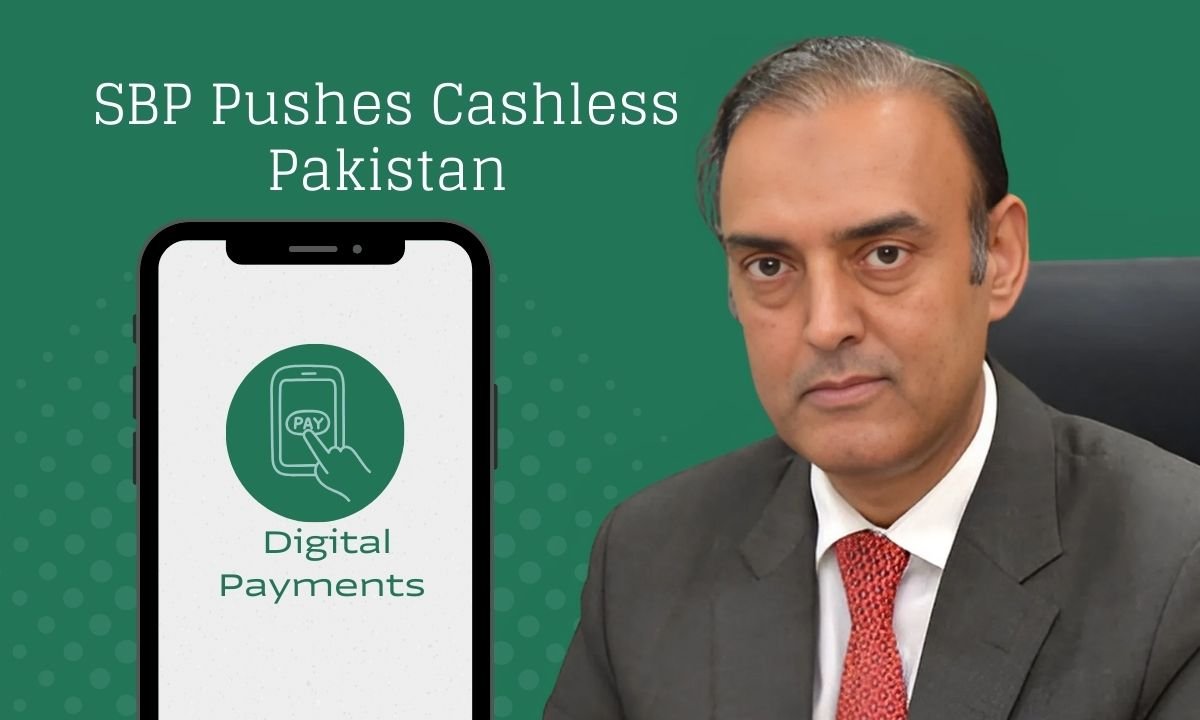SBP Governor unveils digital roadmap for Cashless Economy
Governor Jameel Ahmad says Raast adoption, digital banking, and green finance will shape a resilient financial future for Pakistan.
The State Bank of Pakistan (SBP) is accelerating its transformation agenda by deepening digital innovation.
It expands financial inclusion, and aligns the financial sector with sustainable practices,” Governor Jameel Ahmad said in an exclusive interview with the Chartered Management Accountant Journal of ICMA.Government Pushes Digital Access Across Punjab
Ahmad has outlined a comprehensive roadmap to make Pakistan’s financial ecosystem fully interoperable, transparent, and inclusive.
The SBP’s flagship payment platforms, PRISM+ and Raast, are aimed at reshaping both wholesale and retail transactions. State Bank has launched PRISM+ as a high-value processing system for government securities settlement through a fully integrated central securities depository.
Raast has enabled instant retail payments across the economy. Both systems are built on the ISO 20022 global standard to pave the way for universal digitization.
Raast, in particular, has seen swift adoption as more than 45 million unique users which account for oughly 32% of Pakistan’s adult population are now using the system. Over one million merchants are also onboarded.
The platform has facilitated bulk payments, person-to-person transfers, and merchant payments. It ensures faster, safer, and more transparent transactions. In a bid to sustain its growth, SBP has established Raast Payments Pakistan (Pvt) Ltd which is a dedicated subsidiary and has been tasked with innovation, operational efficiency, and exploring cross-border integrations, especially for low-cost remittances.
Digital payments have expanded rapidly. In fiscal year 2025, SBP data showed that 88% of retail transactions were conducted digitally. The total transactions are 8.9 billion, amounting to around Rs622 trillion.
Mobile app-based banking has also surged 49% in volume during the same period. It reflects greater adoption of digital services. Ahmad has also added that the government’s Cashless Economy initiative would further accelerate this trend. He believed that it would reduce reliance on cash and expanding financial transparency.
To support this transition, the central bank has issued licenses to five digital banks which included EasyPaisa Digital Bank Limited, Mashreq Bank Pakistan Limited, and Raqami Islamic Digital Bank Limited.
Regulatory oversight for these institutions focuses on cybersecurity. It also focuses on consumer protection, and operational risk management.
At the same time, SBP has also engaged with emerging financial technologies. Under the new Virtual Assets Ordinance, the government has set up Pakistan Virtual Assets Regulatory Authority to supervise digital asset activity. SBP is also exploring a potential Central Bank Digital Currency (CBDC) to boost efficiency and inclusion.
The central bank has also prioritized strengthening regulatory infrastructure. Ahmad said SBP has built a national data warehouse and digital case management system backed by artificial intelligence and machine learning tools. These technologies are helping to improv supervision, curbing fraud, and supporting data-driven policymaking.
Financial inclusion has remained at the center of SBP’s agenda. Pakistan now has 95.8 million unique bank accounts and digital wallets. They represent around 70% of its adult population.
Meanwhile, SBP has launched Vision 2028 to reaffirm financial inclusion as a strategic pillar. The plan is aimed at expanding access to quality financial services for women, low-income groups, small and medium enterprises, and farmers. It has also taken Flagship initiatives such as the National Financial Inclusion Strategy, Banking on Equality, and the Asaan Mobile Account to reduce barriers for underserved communities.
Ahmad also highlighted the central bank’s commitment to sustainable finance while linking financial stability with environmental resilience. Policy instruments such as the Green Banking Guidelines, the Environmental and Social Risk Management Manual, and the Pakistan Green Taxonomy are boosting financial flows toward environmentally responsible projects and climate-friendly investments. These measures, he said, have been critical to build a greener and more resilient economy.
“SBP’s strategy rests on three interconnected pillars: digital innovation, financial inclusion, and sustainability,” he said adding that these priorities are set to create a future-ready financial ecosystem to support economic growth and positions Pakistan to compete more effectively in the global digital economy.





